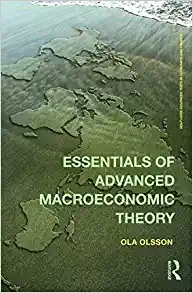
Chapter 12. Money, Banking & The Financial System: Pre- Class & In-Class Activities Packet
( I ONLY NEED THE EVEN NUMBER TO MATCH COLUMN A TO "B" AND "C"
Chapter 12. Money, Banking & The Financial System: Pre- Class & In-Class Activities Packet Name/I.D. Number: Section: Date: Part 2. Matching: Match the Key terms in Column "A" with the definitions in Column "B" by writing the block (upper) case letter of your choice under column "A" and match the definitions in column "B" with the meanings or examples or real world applications in column "C" by writing the small (lower) case letter of your choice under column "B". Column "A" Column "B" Column "C" Amount of reserves kept by banks over & above what is 17. Federal Reserve Q. Funds are loaned and borrowed through a financial q- intermediary. required by the Fed. System (The Fed) R. Anything of value that is owned or that one has claim to. r. A method of financing done by borrowing directly from 18. Reserves S. A financial intermediary transfers funds from those who creditors without the involvement of banks and other financial want to lend funds to those who want to borrow them. intermediaries. 19. Required Reserve T. Anything that is owed to someone else. Monetary or non-monetary properties owned by banks. U. Relates to an economic agent on one side of a transaction Debt obligation owed to others. Ratio (r) having information that an agent on the other side of the U. When debt owed is greater than properties owned. 20. Required Reserves transaction does not have. V. A method of financing that involves banks and other financial V. A condition in which one's liabilities are greater than one's companies that go between the two sides. 21. Reserve Requirement assets. W. A bank or other financial company that go between the 22. Excess Reserves W. A phenomenon that occurs when the parties on one side of borrower and the lender so as to mobilize funds from the the market, who have information not known to others, self- savers to the borrowers. 23. Direct Finance select in a way that adversely affects the parties on the other X. Uneven or unequal access to Information side of the market. y. 24. Indirect Finance The situation in which individuals with good information can X. The central bank of the United States. take advantage of others who do not have the same 25. Financial Y. The sum of bank deposits at the Fed and vault cash information. Z. Any reserves held beyond the required amount; the Z . The situation in which one of the parties to a deal changes Intermediary difference between (total) reserves and required reserves. his or her behavior unknown to the other party that may have 26. Asymmetric AA. Borrowers and lenders come together in a market setting, negative impact on the other party. Information such as in the bond market. aa. A financial statement that shows the net worth a bank. 27. Adverse Selection BB. A condition that exists when one party to a transaction bb. Money kept by banks in their vaults and at the Fed either to changes his or her behavior in a way that is hidden from and meet their customers need or to meet the requirement of the 28. Moral Hazard costly to the other party. Fed. CC. A record of the assets and liabilities of a bank. CC. A percentage that is applicable to the Checking Deposit that 29. Balance Sheet DD. The Fed rule that specifies the amount of reserves a bank must be kept by banks to meet reserve requirement. must hold to back up deposits. 30. Asset dd. The institution in charge of conducting monetary policy In the EE. A percentage of each dollar deposited that must be held in U.S., it is also known as "The Fed" (in Economics). 31. Liability reserve form (specifically, as bank deposits at the Fed or vault ee. The policy of the Fed that requires banks to keep a fraction of cash). their checking deposit to meet the needs of their customers. 32. Insolvency FF. The minimum dollar amount of reserves that a bank must ff. The amount of money that must be kept by banks to meet hold against its checkable deposits, as mandated by the Fed. reserve requirements mandated by the Fed








